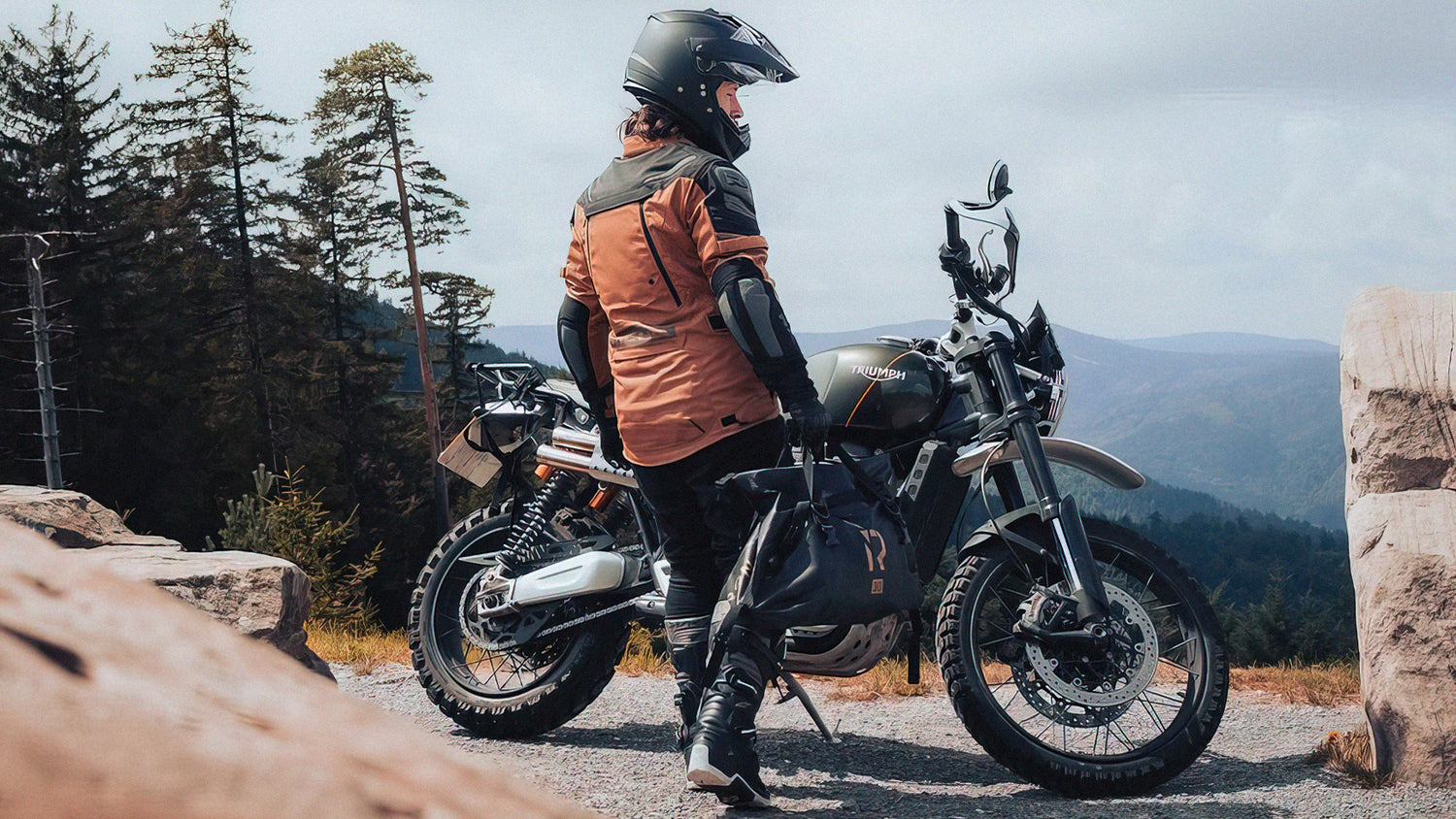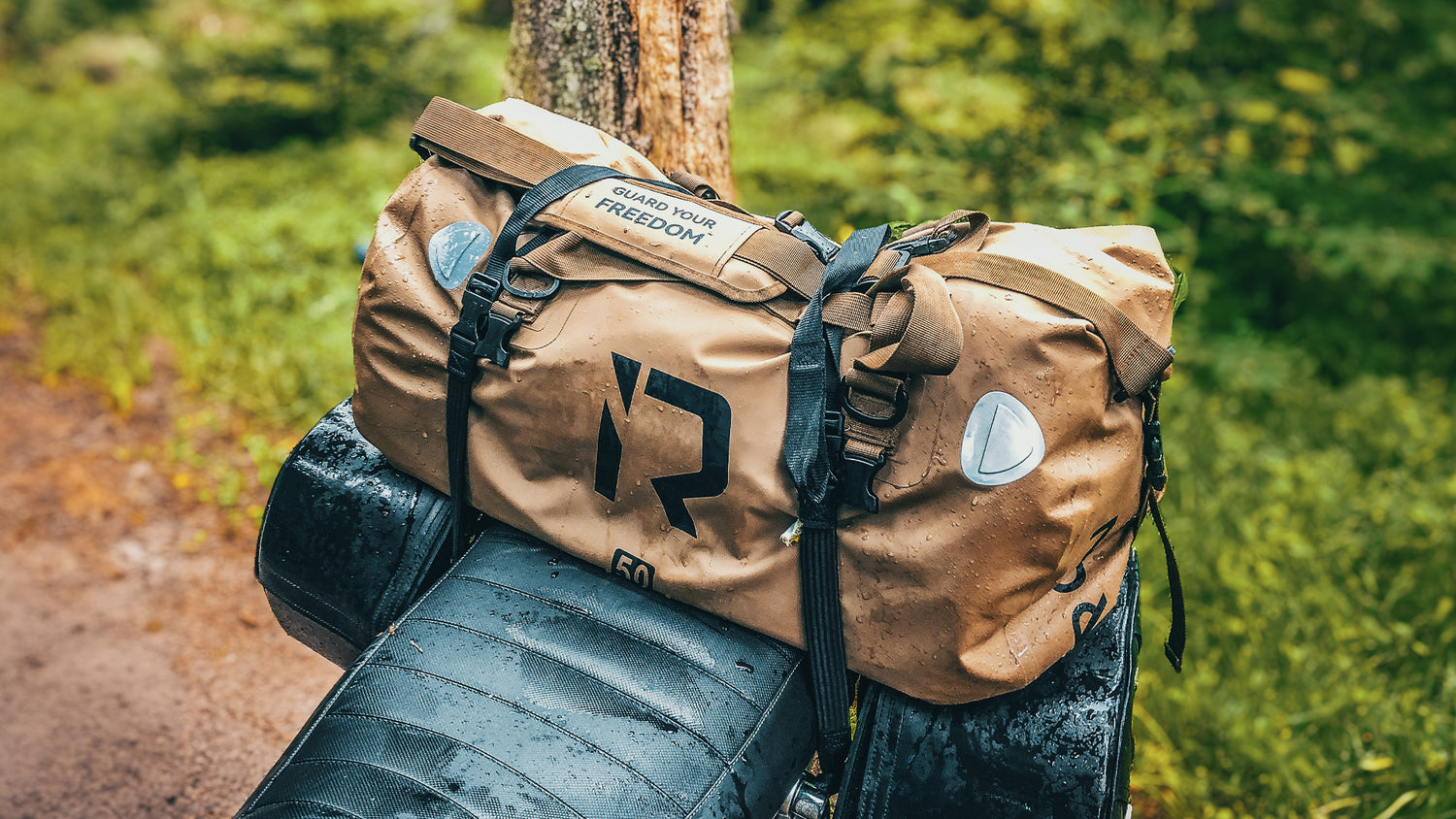Motorcycle saddlebags provide storage for anything from clothes to tools and camping gear. They also add a bit of style to your ride, whether you have a classic chopper or standard bike. In this article, we’ll cover the main reasons for using this motorcycle bag and what to look for when shopping around.
Key Takeaways
- Choose saddlebags based on your storage needs, bike compatibility, and riding style, considering factors like capacity, mounting system, and durability.
- Motorcycle saddlebag prices typically range from €50 to €500, depending on type, material, and brand quality.
- Popular saddlebag materials include leather, synthetic leather, ballistic nylon, and hard plastics or fiberglass for maximum durability.
Why Use a Motorcycle Saddlebag?
You have multiple options for motorcycle bags, but saddlebags offer a few unique features. Since the bags sit on the sides of the tail, they keep the center of gravity lower compared to a tail bag that sits on top. Also, many models are passenger friendly. They stay out of the way and let the passenger enjoy the full seat. Some hard shell saddlebags also have cutouts for your passenger’s legs.
Saddlebags come with a decent amount of storage and with different configurations. You can also combine saddlebags with a motorcycle tail bag or tank bag for even more storage capacity.
Types of Motorcycle Saddlebags
One main distinction between saddlebags is whether they have soft or hard sides. Both have advantages and disadvantages.
Soft-Sided Throwover Bags
Soft-sided throwover bags are both affordable and versatile. These lightweight, flexible bags easily attach to the bike without permanent hardware. While providing essential storage space, they may require periodic adjustment during rides and offer less protection compared to hard saddlebags.
|
Pros |
Cons |
|
Lightweight and flexible |
Less stability during rides |
|
Easy installation and removal |
Require periodic readjustment |
|
Budget-friendly option |
Limited structural support |
|
Suitable for casual riders |
Less protection for contents |
Rigid-Sided Saddlebags
Rigid-sided saddlebags offer durability and security for motorcycle storage. Constructed from sturdy materials like fiberglass or aluminum, they feature lockable mechanisms and built-in taillights. While they are more expensive and complex to install, you’ll get protection for long-distance touring and daily use.
|
Pros |
Cons |
|
Enhanced durability |
Higher cost |
|
Better weather protection |
More complex installation |
|
Improved security with locks |
Added weight to motorcycle |
|
Integrated taillights for safety on some models |
Limited flexibility in shape |
|
Ideal for long-term use |
May require specific mounting hardware |
What To Look for in Motorcycle Saddlebags
As you shop around, consider models with waterproof construction, locks, and quick-release mounting systems.
Waterproof Construction
Waterproof construction is important to have, especially if you plan on riding throughout the entire year. These bags utilize materials like tarpaulin PVC or ballistic nylon to repel water effectively.
Roll-top closures create a tight seal, preventing leaks while offering easy access. Welded seams increase waterproofing while interior liners provide an additional layer of protection.
Some models even include extra weatherproof covers for extreme conditions, making waterproof saddlebags essential for all-weather riding.
Locking Mechanisms
Locks are important for keeping your belongings secure whenever you get off the bike. Built-in locks range from simple combination designs to advanced keyed systems, with some models even providing keyless options for added convenience. You’ll pay more for this convenience, of course.
Quick-Release Mounting System
Quick-release mounting systems let you attach and detach your saddlebags quickly. This is an important feature if you like to change up your riding style from doing errands in town to longer journeys.
Many quick-release mounts are compatible with various motorcycle models, offering versatility for riders looking to switch or upgrade their saddlebags. Some brands even provide pre-assembled kits for simpler installation.
Do Motorcycle Saddlebags Affect Aerodynamics?
Motorcycle saddlebags can impact a bike's aerodynamics, affecting both performance and rider comfort. Their shape, size, and placement can create additional drag, potentially reducing fuel efficiency. The good news is when you use a pair of saddlebags, the effect is even on both sides.
Modern aerodynamic designs and materials can help lessen these effects. The right bag for your bike provides increased storage capacity without sacrificing too much in terms of handling and performance.
Take your time when shopping for motorcycle saddlebags. You want to find a model that allows optimal airflow and limits negative impacts on the motorcycle's overall aerodynamic profile.
How Much Do Motorcycle Saddlebags Cost?
Motorcycle saddlebags vary widely in price, typically ranging from €100 to over €1,300. The cost depends on factors such as material, brand, and type. A name-brand hardshell set will cost much more than a soft-sided generic pair.
Soft saddlebags generally fall in the €200-€300 range, offering a more affordable option for riders. Hard saddlebags, which have better durability and security features, often cost upwards of €900.
Budget-friendly alternatives exist, but higher-quality bags usually provide better long-term value through improved weather resistance and longevity.
How To Choose the Right Motorcycle Saddlebags
Think about the type of riding you do most often. Touring, commuting, off-roading, and street riding styles can all use different types of saddlebags.
Touring Vs. Commuting Needs
For touring, look for large-capacity hard travel bags for motorcycles with secure mounting. These bags should have multiple compartments for organized packing.
Commuters benefit from lightweight, easily removable soft bags with quick-access pockets. Consider throw-over options for convenience.
Regardless of use, ensure the bags offer appropriate weather resistance to safeguard your belongings during rides.
Off-Road Vs. Street Riding
For off-road adventures, opt for rugged, waterproof bags made from durable materials like ballistic nylon or PVC. These should have secure mounting systems to withstand rough terrain.
Street riders can focus on aesthetics and convenience, selecting leather or hard saddlebags that complement their bike's design. Consider modular options for easy attachment and removal.
Motorcycle Saddlebags: Conclusion
Motorcycle saddlebags offer riders essential storage space, enhancing convenience and versatility during journeys.
They accommodate various needs with different styles and materials, ensuring compatibility with different motorcycles.
Quality saddlebags provide durability, security, and functionality, making them a valuable investment for riders seeking to maximize their storage capabilities and riding experience.
Saddlebags for Motorcycles: FAQ
Below are a few frequently asked questions about motorcycle saddlebags.
Can you use just one saddlebag?
While you can technically use one saddlebag on a motorcycle, it would be better to use a tank bag or tail bag that’s centered in the middle of the bike. Using a single saddle bag can throw off the weight when you brake or ride at high speeds.
How do I choose the right saddlebags for my motorcycle?
Consider factors like size, material durability, capacity, mounting system, and aesthetic compatibility with your motorcycle. These elements ensure the saddlebags meet your storage needs and look appropriate on your bike.
Why are saddlebags important for motorcycle riders?
Saddlebags offer storage space for gear and personal items while keeping a low center of gravity and adding some style. They help you stay organized during trips and make longer journeys more comfortable and practical.
How should I maintain my motorcycle saddlebags?
Maintain saddlebags through regular cleaning and weather protection. For leather options, apply conditioner to prevent cracking and fading. Inspect security features for to make sure they work well.





